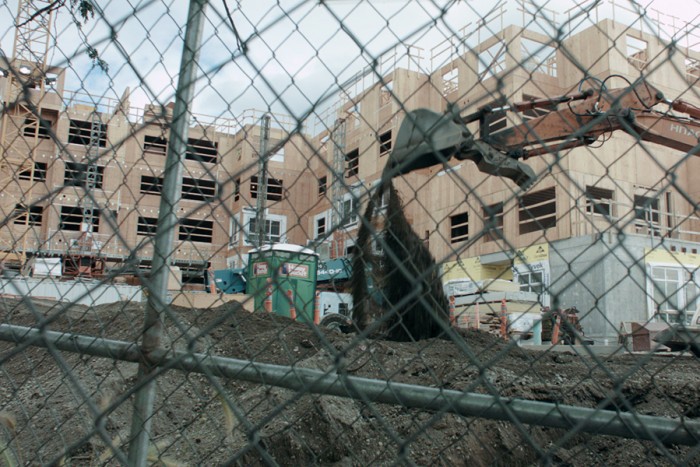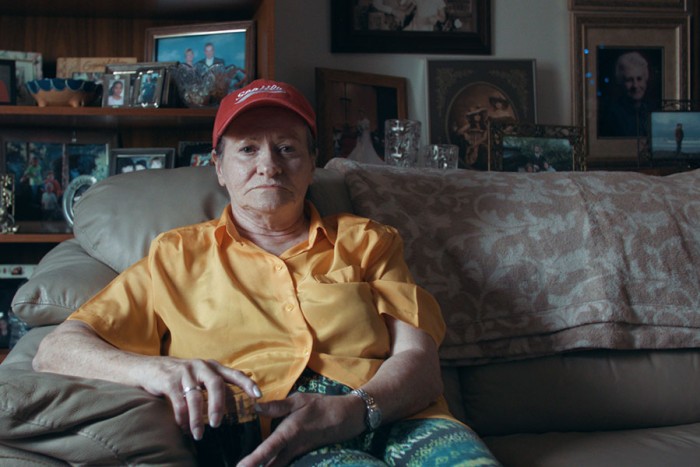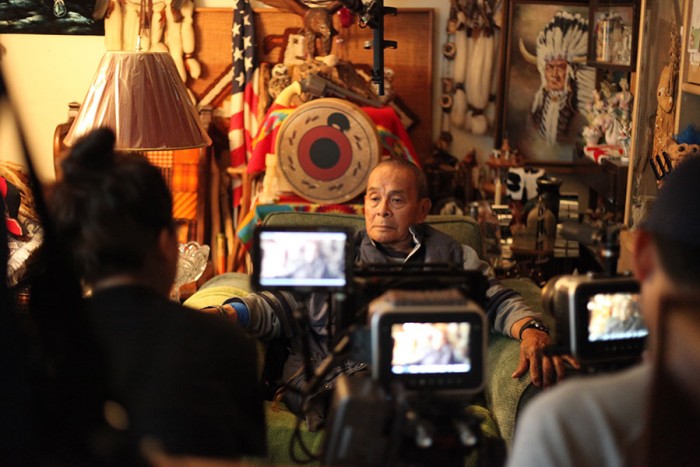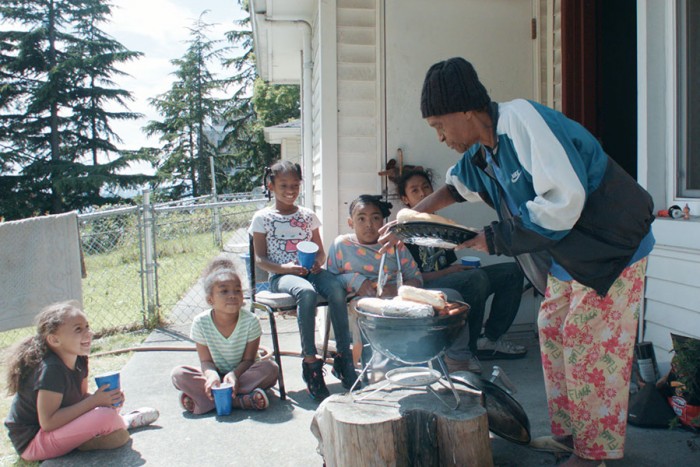Even the Walls
On top of a hill in the heart of Seattle sits a 30-acre development undergoing a massive deconstruction. Conceived as the nation’s first racially-integrated, public housing area, Yesler Terrace now stands on the edge of a new social experiment — that of mixed-income housing.
As bulldozers raze their neighborhood, public housing tenants grapple with losing their tight-knit community to a rapidly gentrifying city.
Our new film, Even the Walls, begins here: chronicling stories of more than seven decades of carefully cultivated human connectivity.
Yesler Terrace: the next South Lake Union?
The only current investor in the Seattle Housing Authority’s development plan is Paul Allen’s Vulcan Real Estate. The company recently told the Puget Sound Business Journal that they hope to make the area of Yesler Terrace look much like their other redevelopment in South Lake Union – a recently industrial area now full of boutiques, high-end eateries, condominiums, and Amazon’s campus.

For over 70 years, Yesler has been home to thousands of Asian, Asian American, African, African American, Native American, Hispanic and Caucasian residents. In more recent years, refugees from Southeast Asia, East Africa and the Middle East have called Yesler home.
Even though all 1,200 low-income tenants have been offered a space in the new mid-rise, mixed-income apartments, not one believes their community will remain intact. Most people we talked with are deeply confused about the offer to stay in a place they know but will scarcely recognize. Will they still feel welcome in their neighborhood? Will they be able to access the neighborhood and their neighbors in the same way?
Gentrification vs. human connection
Many of the residents featured in Even the Walls have a strong sense of pride in the social capital they helped to build, yet feel powerless against the frenzied pace of new development.
The recent tidal wave of financial resources flowing into Seattle has influenced the political landscape, and economic progress has seemingly become its singular focus: Seattle is now the 4th fastest gentrifying city in America. Yesler Terrace has not been spared, and has been rezoned to create density through mixed-income and mixed-use development. A relatively new tactic, mixed-income housing is meant to motivate the poor, and bring safety and cleanliness to neighborhoods by mixing the classes.

The story of Yesler Terrace could very well be set in Chicago, New York, Istanbul, London or Sydney.
Across the globe, as urban renewal pushes for material progress, the priceless resource of human connection is being lost. Developers all over the world are opportunistically devouring low-income neighborhoods because tenants lack the economic power necessary to save their homes.
Many urban areas are being bulldozed, or reappropriated for their ‘good bones,’ under the guise of creating density or bringing tax dollars to the urban core. Although density is a tactic for combating climate change and tax dollars could help failing inner-city schools, it is important to question: why now do developers care about environmentalism, social justice and racism? Why are low-income neighborhoods targeted? Is new development in the urban core truly solving these issues, and at what cost?

If density is the magic bullet, if gentrification is for the best, then it should be done delicately, with great respect for the current neighbors and generous policies built to create massive amounts of affordable housing. The late Minnesota Senator Paul Wellstone once said, “we all do better when we all do better.” It is the intention of the film to become one voice in the chorus singing out for equality, social equity and for recognition of what communities create together (even if they have no market value).
Making invisible systems visible
Through intimate interviews and cinematic portraits this film seeks to transcend the immediate question of relocation to honor the stories of Yesler’s residents and their neighborhood, before they are lost.
Traveling throughout the changing landscape of the once tight-knit community, and weaving in and out of personal vignettes, Even the Walls explores the diversity of experiences of living in Yesler Terrace. In Yesler, neighbors watch each other’s children, take care of shared goods, and provide comfort and camaraderie. This kind of community capital is not taken into account during economic assessments evaluating the worth of a neighborhood.

Even the Walls does not ask architects, builders, academics or public housing experts about Yesler Terrace and its “track record.” Instead it takes a more personal approach and speaks with the true experts on Yesler Terrace: its community members. They viscerally know the reality of what will be lost and what we can gain by shifting our perspective from short-term financial gain to long-term prosperity for all members of our city’s communities.
Although linked to a number of politically-charged issues, the film’s storyline focuses on personal stories, seeking to foster empathy over sympathy. It avoids divisive thinking and finger-pointing, and instead exemplifies the life experiences we all struggle with, the joys we’ve known, and the desire for home, safety and belonging we can all feel.
On a personal level, Saman and I created Even the Walls to explore our personal interests in home, culture and community. To destroy a place like this without honoring its existence, recognizing its place in a chain of incredibly similar events across the country, or viewing it as a great loss to Seattle’s social systems would be a disgrace.
If you feel connected with these issues, please help us raise the money we need to distribute the film! We have just a few days left to reach our fundraising goal. A gift in any amount will help. Thank you for your support!

